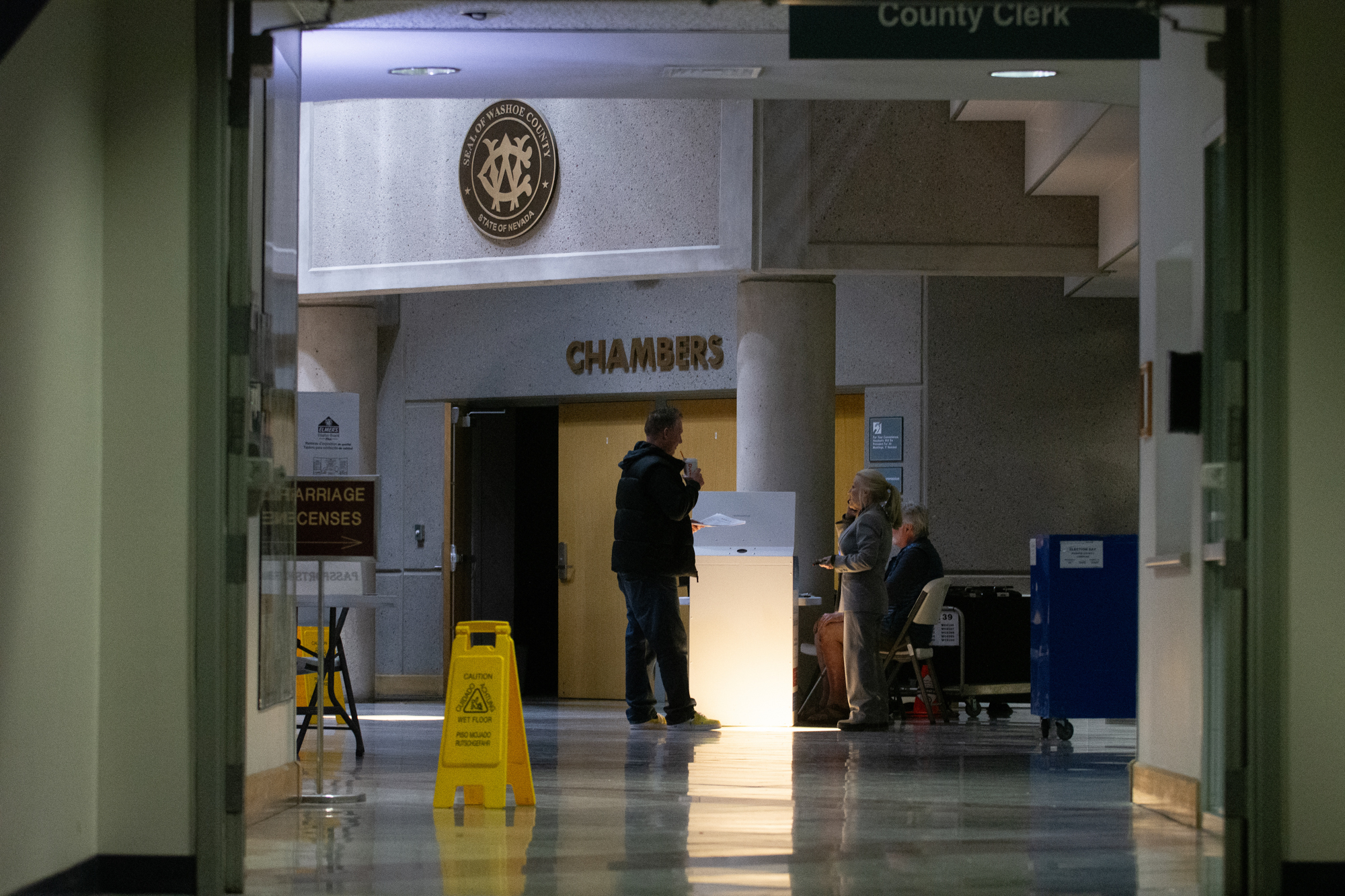Judging by the early voting numbers, it sure doesn’t seem like many people are excited for this primary election.
To be fair, primaries always tend to lack enthusiasm compared to the general election that follows. Regardless of what the final numbers look like next week, it’s still safe to assume that November’s vote totals will be a far different story. As with nearly every presidential election in recent memory, the total number of ballots cast in the general election will likely reach new highs, regardless of how unenthused voters seem currently.
Nonetheless, given the internal division within both parties, one would think 2024 would attract a bit more attention from voters. After all, which Republican or Democrat emerges victorious from their respective primaries will likely make all the difference come early November — and there’s nary a partisan around that doesn’t seem to believe November will be “the most important election of our lifetime.”
And yet, even by primary standards, it’s painfully obvious there simply isn’t a big rush among voters to get to the ballot box.
Undoubtedly, such voter malaise is confounding many politicos, activists and candidates in both parties. Even in years with fairly “normal” turnout, the political class seems perplexed by the lack of voter involvement at this stage of the process. If turnout ends up being below average this year, one can be sure there will be plenty of hand wringing about the public’s lack of civic engagement.
However, such apparent voter apathy isn’t mysterious, nor does it portend a future of crumbling democratic involvement.
By their very nature, primary elections are designed to incentivize only the most politically involved voters — which will never be an overwhelmingly large percentage of the electorate. As the Bipartisan Policy Center points out, there are some structural reforms that could encourage higher participation rates, but even under the best circumstances such structural reforms would be extremely limited in their effects.
As it turns out, for the vast majority of voters (roughly 80 percent) it’s not merely the structure of the system or even the candidate selection itself keeping them from the polls. It’s simple behavioral economics: Choosing between one of two major candidates in a general election requires significantly less effort than parsing the nuanced differences of numerous candidates in the same political tribe. As one research paper put it, voters view primary races as being lower stakes while, nonetheless, requiring more difficult choices than general elections.
It seems this might be especially true in 2024, as most Americans have grown decidedly weary by our nonstop political squabbles. According to a Pew Research poll from last year, a whopping 65 percent of Americans say they get “exhausted” when thinking about politics. Considering that nearly as many respondents felt “underwhelmed” by the candidates who will be at the top of the ticket in November, a general despondency about the American political system is easy to understand.
And while plenty of “exhausted” voters might still be willing to show up in November for the major races, the investment of time and energy needed to intelligently weigh in on primary contests are often considered too much effort for many who already feel worn down by our nonstop political news cycles.
After all, while candidates, journalists and pundits tend to obsess over every little happening in the world of politics, most Americans are more than happy to “check out” of the contemptuous and fractious nature of it all whenever they can. For those who follow politics closely, many of today’s primary races are allegories of the internal divides within both parties — but many Americans see nothing more than petty infighting among generally homogenous partisan tribes.
Even where the intraparty conflicts are fairly obvious, most ordinary people simply aren’t interested in battling for the soul of the Republican or Democratic party — especially when there’s a growing feeling among voters that neither party adequately represents their concerns. As Americans have grown more alienated by both parties, the incentives to be highly active in the process has understandably diminished.
Ironically, that feeling of alienation is only exacerbated during closed-primary elections as candidates must pander to narrow partisan constituencies if they hope to secure their party’s support.
In other words, to most voters who aren’t already deeply involved in party politics, the tenor and focus of most primary contests simply isn’t motivating or engaging — especially in a time such as ours where intraparty division is on the rise and few within the party can focus on big tent politicking. For a great many casual voters, waiting for the general election is simply more tolerable than wading into the often petulant and contemptuous disagreements that take place in early June.
Of course, what all this means is that an even smaller than normal subsect of niche activists will be responsible for selecting candidates — candidates who will then, somehow, have to appeal to America’s growing swath of “exhausted” voters. We’ll soon find out which party’s small share of primary voters are up to the task.
Michael Schaus is a communications and branding expert based in Las Vegas, Nevada, and founder of Schaus Creative LLC — an agency dedicated to helping organizations, businesses and activists tell their story and motivate change. He has more than a decade of experience in public affairs commentary, having worked as a news director, columnist, political humorist, and most recently as the director of communications for a public policy think tank. Follow him at SchausCreative.com or on Twitter at @schausmichael.

